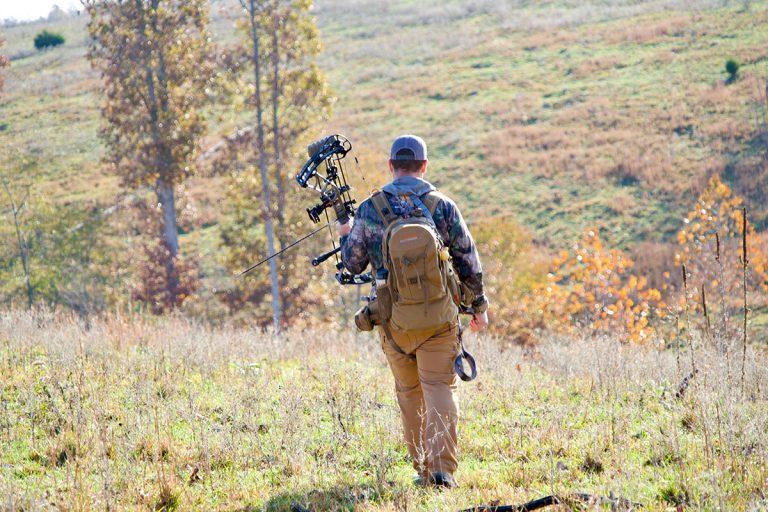Spontaneously deciding to hunt after work, I swiftly donned my hunting gear beside the truck and proceeded to pass through a livestock gate that marked the entrance to my hunting grounds. As I cleared the gate, I made sure to secure it, not wanting any unexpected disturbances. My destination was a ladder stand nestled about three to four hundred yards down the woodland path. As I made my way, I glanced back and was met with the sight of two deer a mere fifty yards away, a doe accompanied by her two fawns. Being a doe with two fawns, I decided to give them a pass. Once the trio had moved along, I continued my journey down the woodland trail, each step taken with utmost care.
Merely thirty yards further into my trek, another intriguing sight presented itself. This time, it was a mature doe accompanied by a smaller buck. My interest in maintaining the property’s deer population led me to consider harvesting a doe. To achieve this, I embarked on a spot and stalk mission, cautiously closing the gap to reach archery range without alarming the animals. With luck on my side, I managed to maintain a barrier of tall multiflora roses between myself and the two deer, inching closer with each silent step. Finally, I found myself at a distance of twenty-six yards from the mature doe, and a well-placed shot brought my mission to a successful conclusion. In less than twenty-five minutes from departing my parked truck, I had achieved my goal.
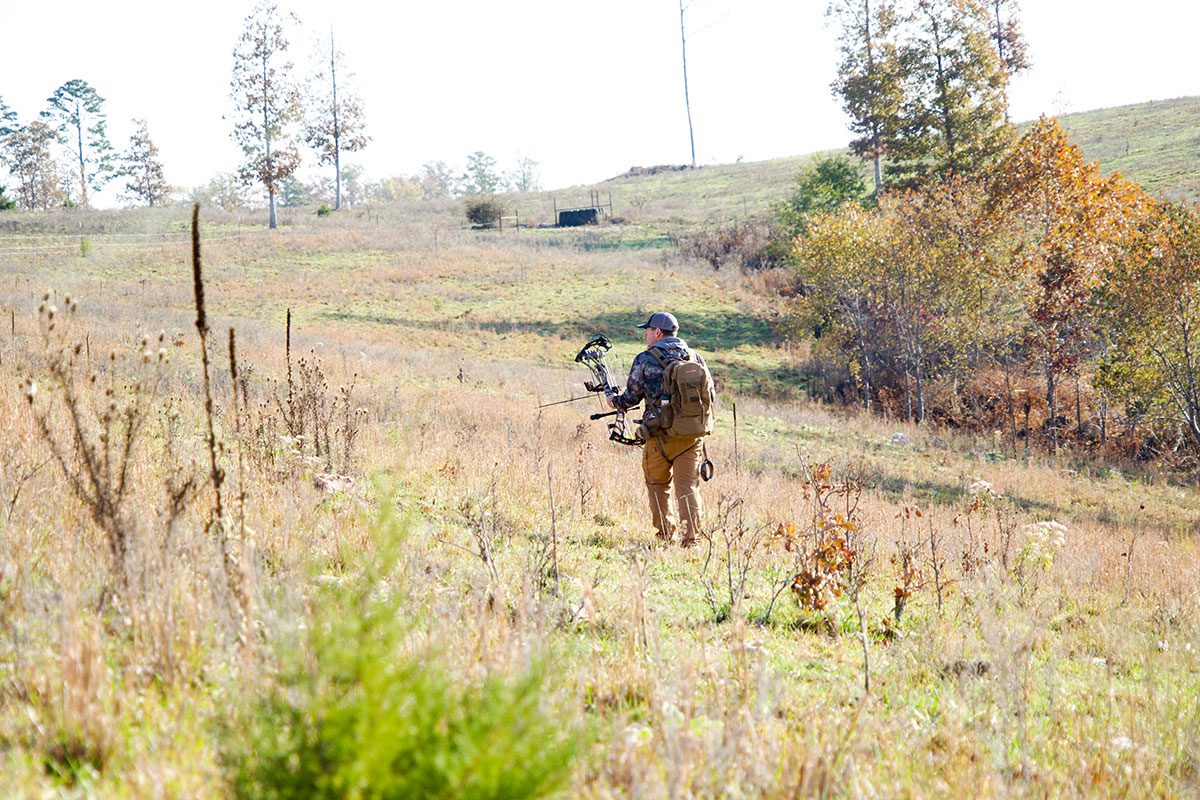
Spot and stalk bowhunting is a challenging yet rewarding approach when pursuing deer, especially the elusive whitetail deer. While my hunting experience may have seemed like a seamless endeavor, this method demands a unique blend of stealth, patience, and a profound understanding of the deer’s behavior.
To stalk your way into close shooting range without getting seen, smelled, or some other factor interfering, all the dynamics must be in a hunter’s favor. A successful spot and stalk hunt requires important specific types of equipment like binoculars and a range finder, an awareness of when to abort a spot and stalk style of the hunt, and the proper bow setup for this method of hunting.
Factors for Successful Spot and Stalk Bowhunting
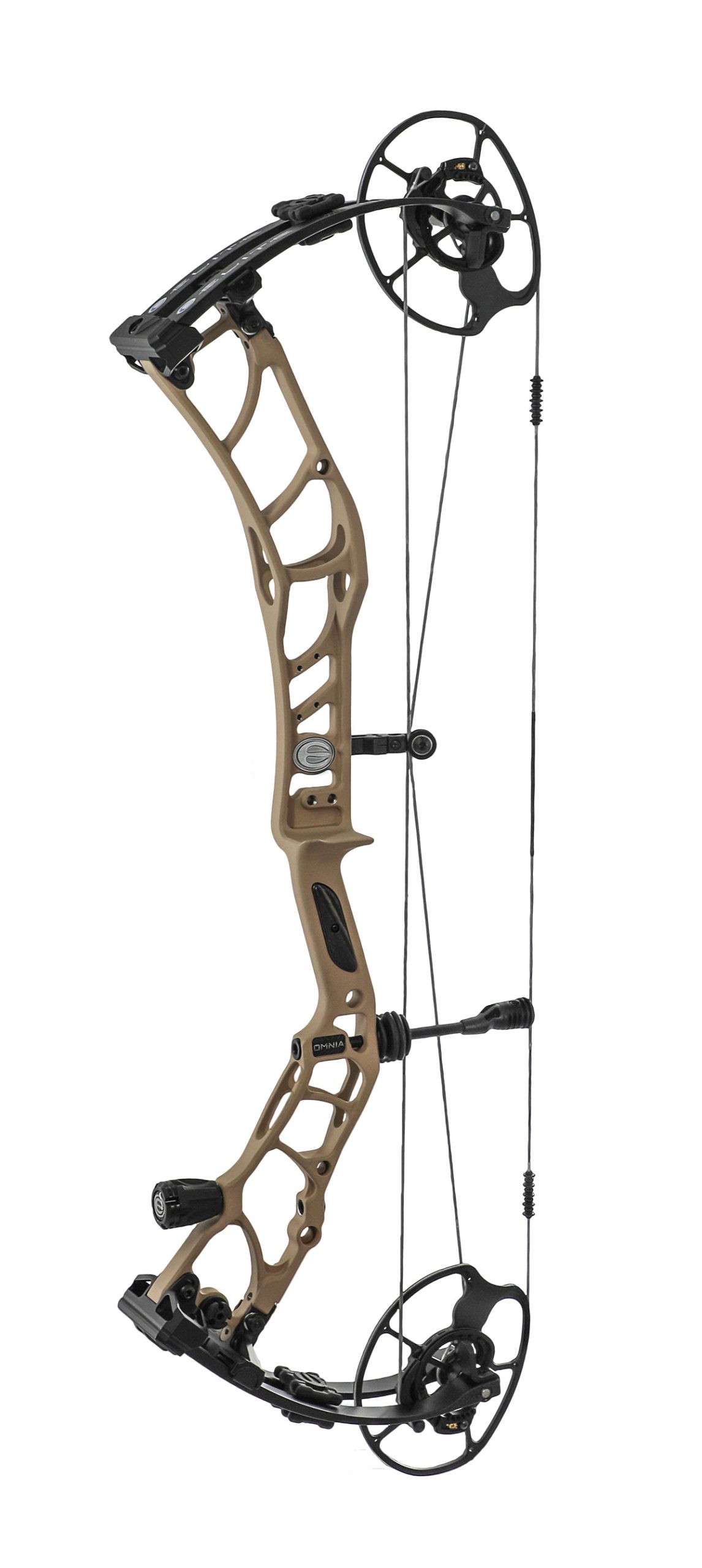
Although stalking a wild animal to get within close archery range can be adrenaline-filled and satisfying to a hunter’s soul, one shouldn’t attempt this difficult style of hunting every time they go hunting. There are certain factors that a hunter must consider when making the quick decision whether to be patient and wait or be aggressive and attempt to move their way into close range.
Terrain and Habitat
The first crucial factor is the choice of hunting location. Spot and stalk hunting is most effective in open terrain, such as prairies, agricultural fields, or sparse woodlands. Understanding the deer’s preferred habitat is essential. Once a deer has been spotted, the hunter must then determine if the terrain is suited for concealment when trying to move in close. Often, I have used the sides of hills, shadows, and other landmarks to stay hidden went stalking. My goal is to keep something between me and the deer as long as possible to avoid being seen.
Wind Direction
Wind direction is also critical when spot and stalk hunting. Always position yourself downwind of the deer’s anticipated path. This ensures that your scent doesn’t alert the deer to your presence. Inside my ALPS Outdoorz Shield Bino Harness, I always keep a windicator to keep an awareness of which way the wind is coming from and if the deer can catch my wind. By gently squeezing the bottle of odorless powder, a small stem of powder exits the bottle, which is then carried in the wind like smoke. I have checked the wind over twenty times on specific stalk attempts to avoid having swirling wind or direction changes ruin my hunt.
Stealth and Patience
Stalking deer requires utmost stealth and patience. Move slowly and deliberately, taking care to minimize noise and sudden movements. Sometimes, staying motionless for extended periods is necessary. Some stalk attempts happen quickly, as with my hunt, then there are other times when a successful stalk may take several hours when stalking a bedded deer, which can prevent moving any closer until they eventually stand.
Camouflage and Concealment
Adequate camouflage clothing is a must to blend into your surroundings. Consider using natural vegetation such as grass, timber, or the terrain to help assist your preferred camouflage pattern to work as designed effectively. If you wear bright solids or no camouflage on any part of your body, deer gain the advantage of being able to spot you from longer distances.
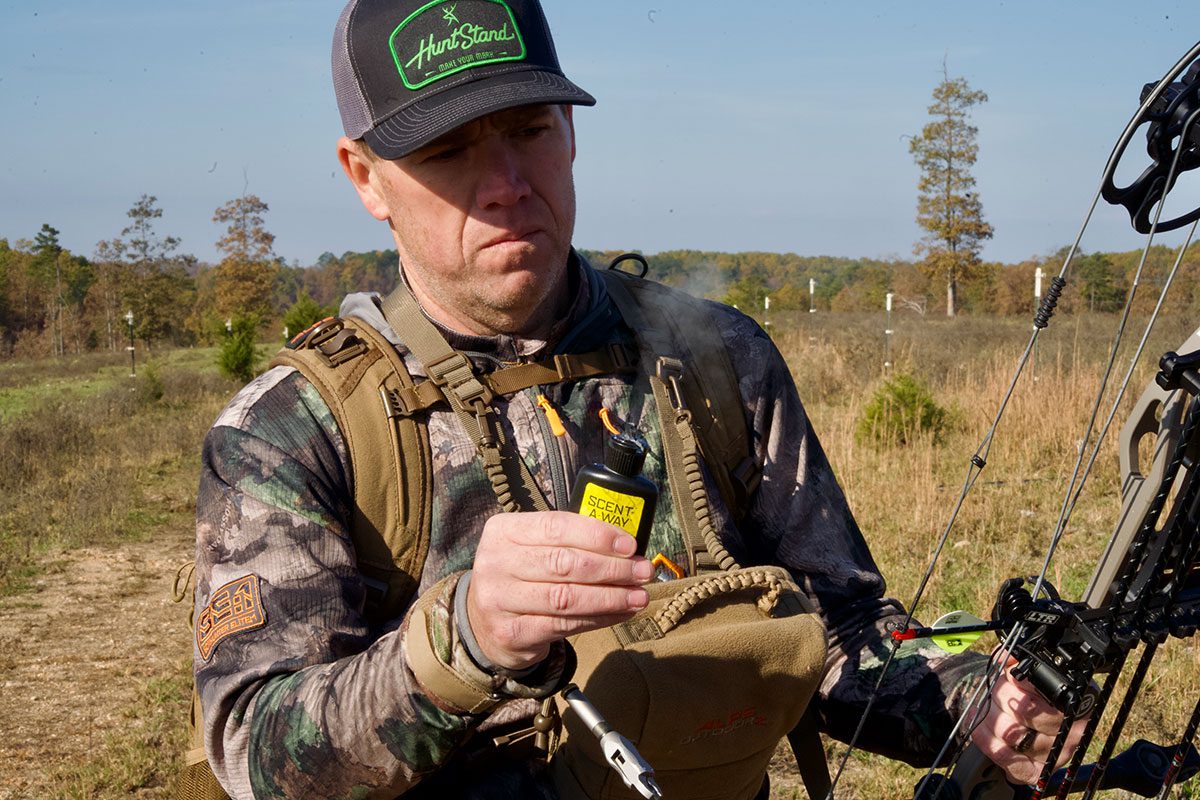
Knowledge of Deer Behavior
Understanding the behavior of whitetail deer is crucial. Knowing their feeding patterns, rutting seasons, and preferred travel routes can help you anticipate their movements. By scouting and knowing your deer patterns, you can move ahead of deer and wait for them to come to you naturally, preventing the challenge of moving into close range by needing to inch closer in the open.
In recent years, I have become a huge fan of hunting apps such as Hunt Stand. Having the luxury of seeing the lay of the land and what the overall landscape has to offer can help determine the best route of stalking.
Importance of Binoculars and Range Finder
Binoculars are invaluable for spot and stalk hunting. They allow you to scout for deer from a distance without alerting them to your presence. High-quality binoculars help identify deer and assess their size and trophy potential.
A range finder is essential for accurately determining the distance between you and your target. This is crucial for making precise shots with a bow, as misjudging the distance can lead to missed or poorly placed arrows. One of the toughest areas to judge distance can be in open terrain after having spent an extensive amount of effort to reach it. By having a rangefinder, the hunter can range the animal or landmarks as they stalk or moments before taking a shot.
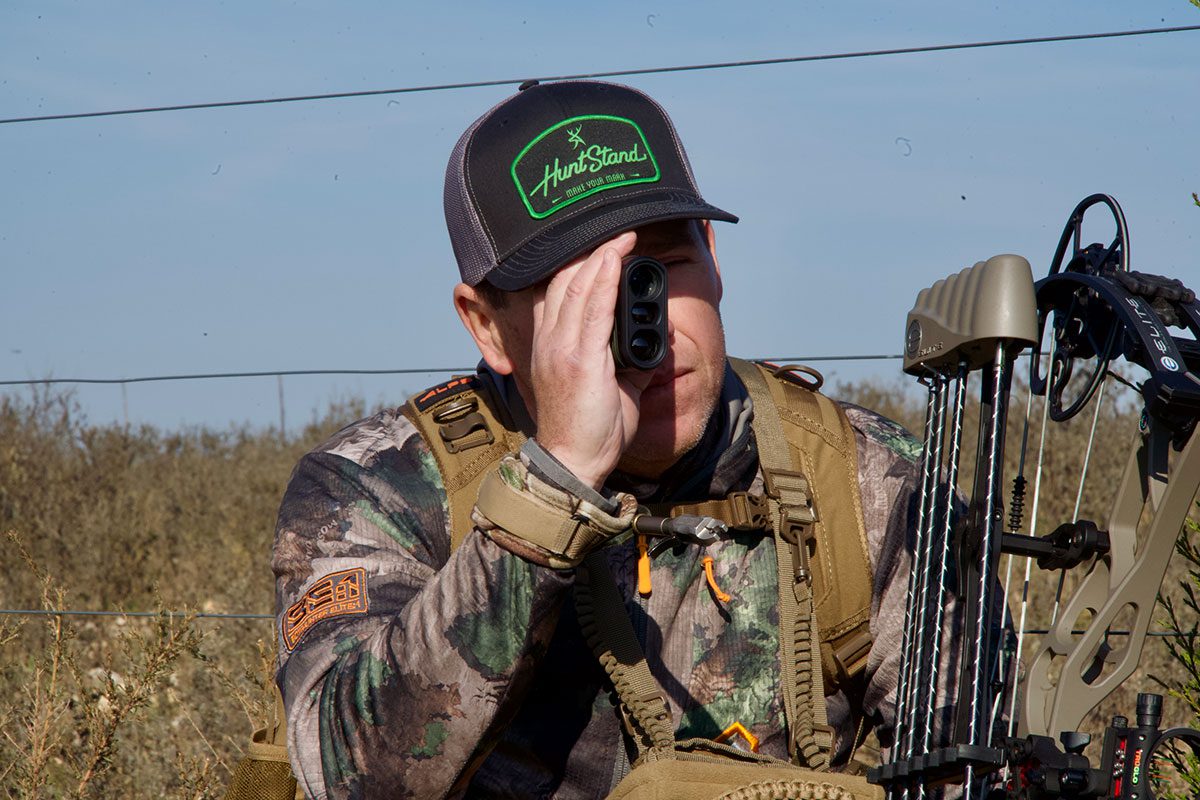
When to Avoid Spot and Stalk Hunting
While spot and stalk hunting can be highly effective, there are situations when it’s best to opt for other hunting methods.
| Vortex Optics – Viper HD 3000
Precision and speed mean the difference between filling your freezer and tag soup when attempting a spot and stalk in open country. The Viper® HD 3000 laser rangefinder gives bowhunters the tools to act quickly and confidently, with a 3,000-yard max range and a stunning HD optical system that lets you pinpoint big game faster at a distance. The Viper HD 3000 features four target modes (Normal, First, Last, ELR) and two ranging modes (LOS, HCD), meaning you get the flexibility to range any shot on any hunt, making the Viper® HD 3000 perfect for the spot and stalk style of hunt. Retails: $599.99 |
| Elite Archery – Omnia
Whether crawling on the ground or hurrying to make up long distances when trying to get into close range, The Elite Omnia can keep hunters ready to make the shot. Reaching speeds up to 347 feet per second, the Elite Omnia brings a seemingly unachievable shooting experience to life through a foundation of shootability, added performance, and a customizable feel with V3 Micro Mod Let-Off adjustment that’s unlike ever before. 32” Axle to Axle Retails: $1249.99 |
Thick Wooded Areas
Spot and stalk hunting is less practical in dense forests where visibility is limited, and stalking quietly is almost impossible.
High Human Activity Areas
Avoid hunting in areas with heavy human traffic, as the presence of hikers, campers, or other hunters can disrupt your stalking efforts.
Unpredictable Wind Patterns
Hunting in areas with erratic wind patterns can make maintaining the crucial downwind position difficult. Inconsistent winds can quickly reveal your presence to deer.
Best Bow Setup for Spot and Stalk Hunting
Selecting the proper bow setup is critical for spot and stalk hunting. In today’s world of bowhunting, bow manufacturers are producing the most compact, lightweight bows that hunters have ever seen. Compact and lightweight are both key factors in having the proper bow for stalk hunting.
Compact and Lightweight Bows
Opt for a compact, lightweight bow that’s easy to carry and maneuver. This allows for quick and agile movement while stalking. Often, crawling or maneuvering on your hands and knees is required to get close range. A compact bow makes for easier stalking.
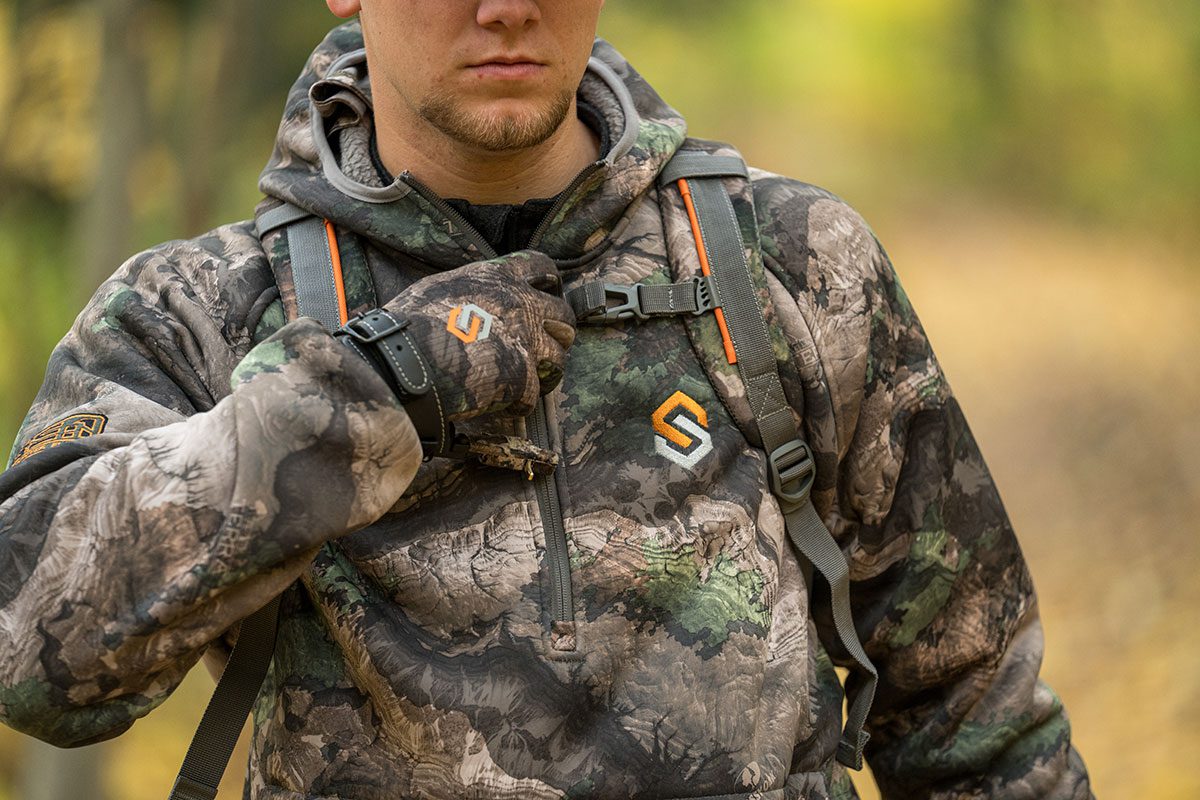
Low Draw Weight
A lower draw weight is preferred, as it’s easier to draw the bow while crouched or in awkward positions. Or after fatigue has set in after a longer stalk attempt. By having an easier-to-draw bow, one can pull back with less effort, as well as stay at full draw for longer periods when waiting on the perfect shot opportunity.
Spot and stalk bowhunting is a challenging but immensely rewarding method for pursuing whitetail deer. Success in this hunting style relies on factors like terrain, wind direction, and an understanding of deer behavior. The right equipment, including binoculars and a range finder, can significantly enhance your chances of success. However, it’s important to recognize when spot and stalk hunting may not be the best approach and to choose a suitable bow setup for the task. With practice and dedication, spot and stalk bowhunting can become an exhilarating and effective way to pursue one of North America’s most popular big game species.
Per our affiliate disclosure, we may earn revenue from the products available on this page. To learn more about how we test gear, click here.





